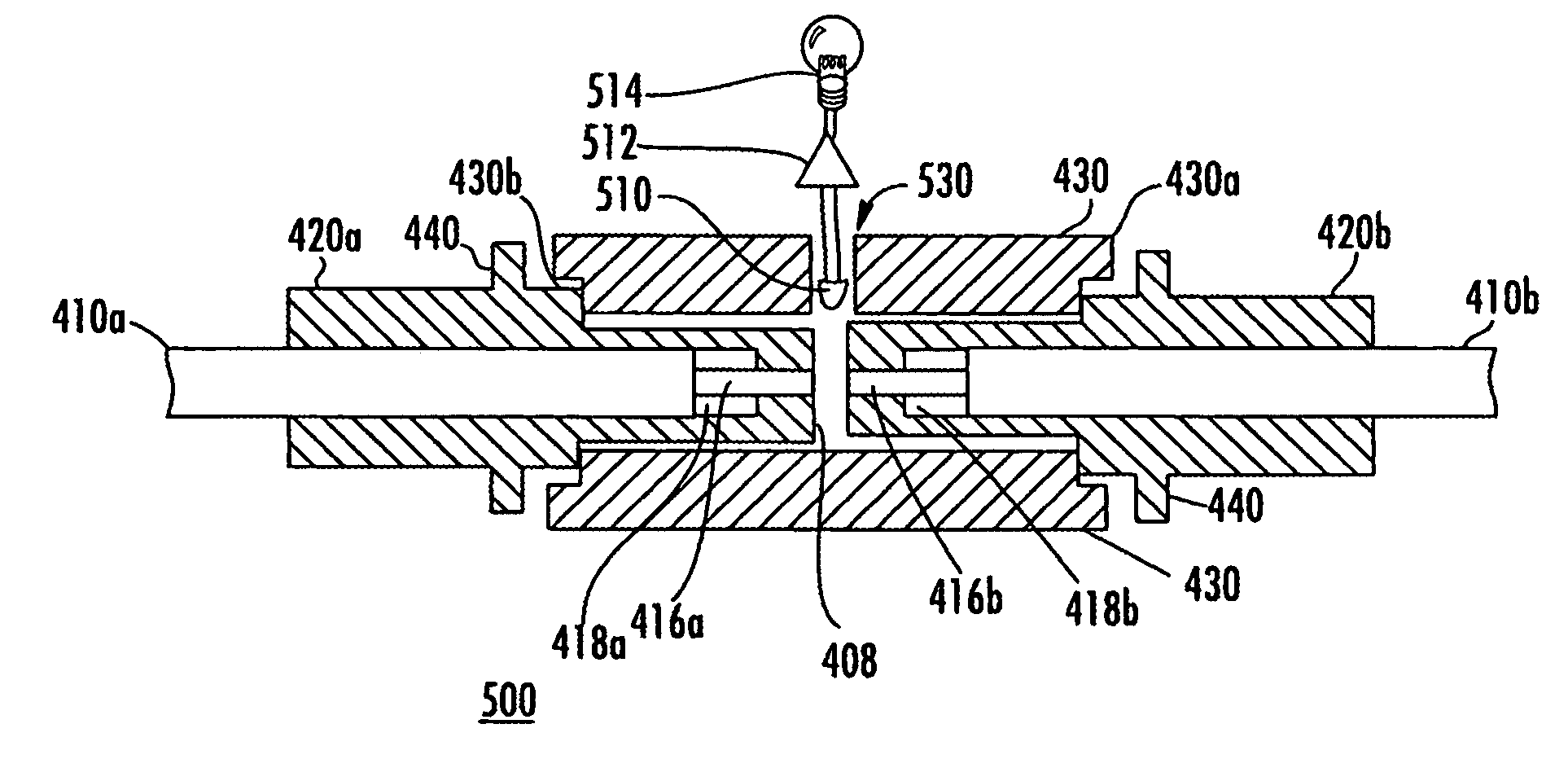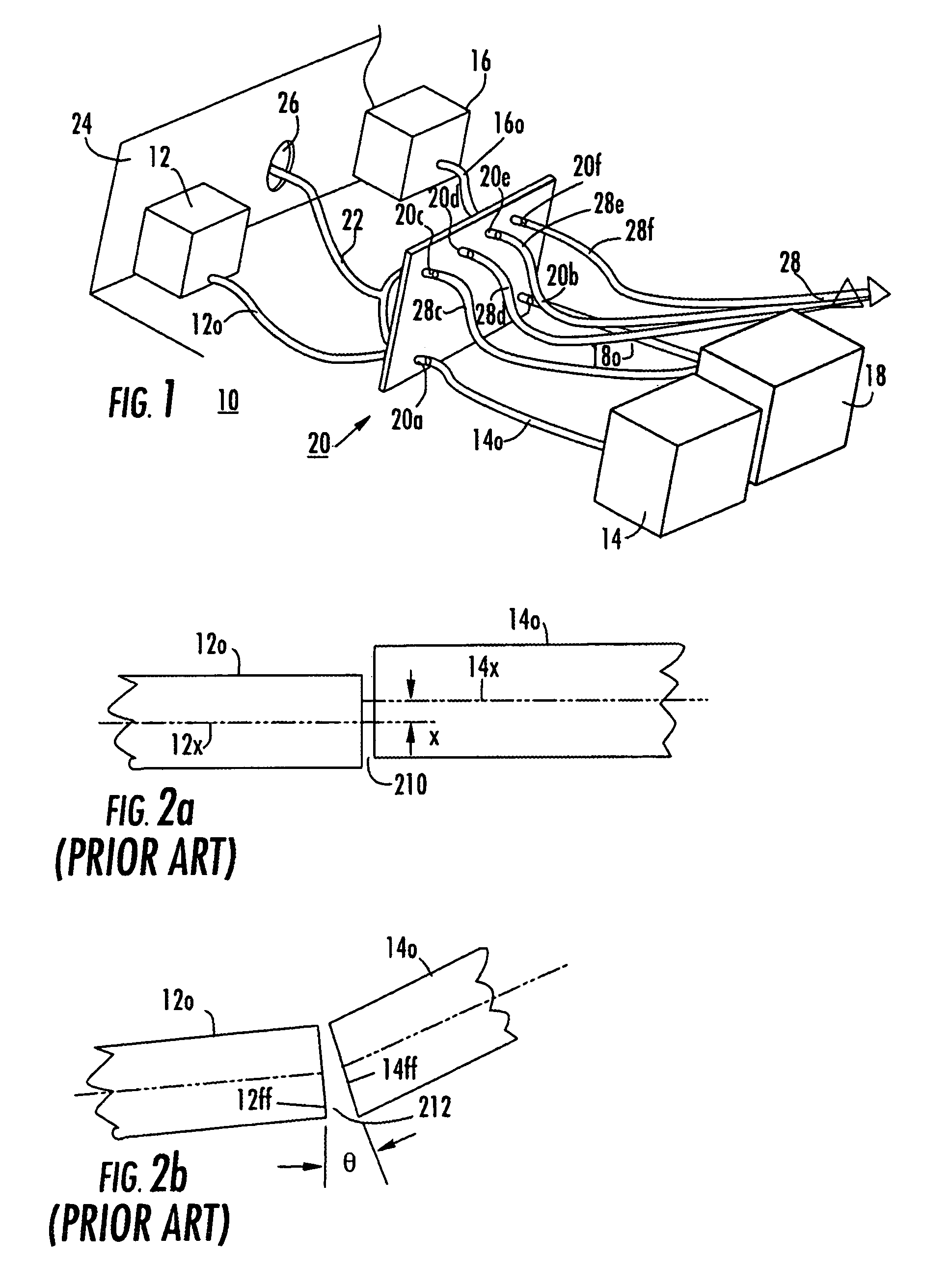Optical fiber coupling and inline fault monitor device and method
a technology of optical fiber and fault monitor, applied in the field of sensors, can solve the problems of troubleshooting, unknow whether, and damage to the optical fiber itself, and achieve the effect of facilitating the flow of ligh
- Summary
- Abstract
- Description
- Claims
- Application Information
AI Technical Summary
Benefits of technology
Problems solved by technology
Method used
Image
Examples
Embodiment Construction
[0021]One way optical fibers are connected is by butting together flat end faces of the optical fibers. FIGS. 2a and 2b illustrate two possible types of optical fiber misalignment, as described at page 154 in the text FIBER OPTICS AND OPTOELECTRONICS, second edition, by Peter K. Cheo, published 1990 by Prentice-Hall, ISBN 0-13-315045-3. In FIG. 2a, the axis 12x of optical fiber 12o is offset by a distance x from the axis 14x of optical fiber 14o, so the gap 210 between the ends of the fibers has constant thickness or spacing. In FIG. 2b, the front faces 12ff and 14ff of optical fibers 12a and 14a, respectively, are skewed by an angle designated Θ to create a gap 212 of varying width.
[0022]The skewing or offset of the two fibers as described in conjunction with FIGS. 2a and 2b tends to cause some of the light traveling through the gap between the leak, so that the receiving optical fiber receives less light than might otherwise be expected. Also, some of the light arriving at the gap...
PUM
 Login to View More
Login to View More Abstract
Description
Claims
Application Information
 Login to View More
Login to View More - R&D
- Intellectual Property
- Life Sciences
- Materials
- Tech Scout
- Unparalleled Data Quality
- Higher Quality Content
- 60% Fewer Hallucinations
Browse by: Latest US Patents, China's latest patents, Technical Efficacy Thesaurus, Application Domain, Technology Topic, Popular Technical Reports.
© 2025 PatSnap. All rights reserved.Legal|Privacy policy|Modern Slavery Act Transparency Statement|Sitemap|About US| Contact US: help@patsnap.com



